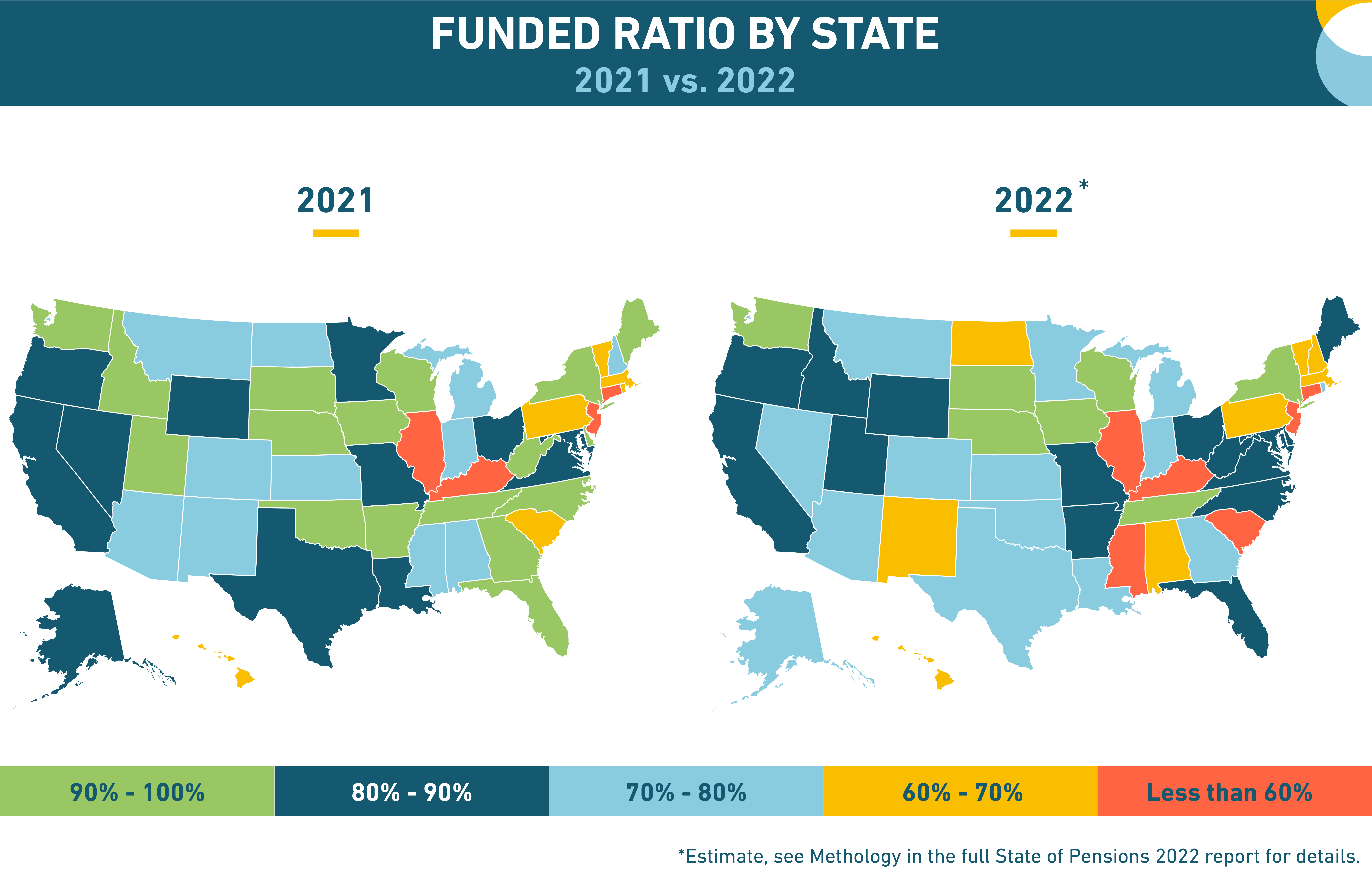Market Losses Deal Heavy Dent to State and Local Pensions

Nora Carol Photography
Last year saw unfunded liabilities for the nation’s largest public retirement plans climb by roughly a half-trillion dollars.
The market turmoil of 2022 was tough on public pension plans. Following record investment gains in 2021, most top state and local retirement systems saw nearly half of those earnings wiped away, according to the New York-based nonprofit Equable Institute.
The group’s year-end report on the state of pensions in 2022 found that the average funded ratio for state and large municipal plans declined from 83.9% in 2021 to 77.3% in 2022, based on available data through Dec. 31.

The market forced the funds’ unfunded liabilities to climb to $1.45 trillion last year, a roughly half-trillion dollar increase from 2021 in the gap between assets and what’s owed to retirees in the years ahead.
The poor returns, though, are merely the result of a volatile market and not bad management, according to the report.
“States and cities have made full contributions to their pension funds and in many cases even provided supplemental contributions,” the Equable report said. “But poor investment returns in 2022 have driven down the average funded ratio for state and local plans.”
In recent years, public plans have shifted more of their funds into “alternative” investments like private equity, hedge funds and real estate. The report noted that better than expected private equity gains gave plans a boost in 2022. But it also pointed out that reporting of private equity returns can lag months behind and that 2023 figures would likely show losses.
An issue brief from The Pew Charitable Trusts this past fall found that states have made significant progress on pension funding in recent years by increasing contributions to their retirement systems. The number of states meeting or exceeding contribution targets more than doubled between 2014 and 2020 from 17 to 38, marking an “important success story for taxpayers, public sector workers, and retirees.”
While 2022’s returns are disappointing, they are just a snapshot of pension systems’ overall performance, wrote Hank Kim, the executive director of the National Conference on Public Employee Retirement Systems, in an op-ed last fall.
“It's important to remember that for public pensions, the highs generally aren't as high as the market at large, and the lows aren't as low, but this is a result of deliberate risk management, he wrote. “Slow and steady wins the race. And that's why public pensions invest for the long haul.”
The state of pensions reports from Equable seeks to analyze trends by looking at the investments, contributions, cash flows, and benefits for 228 of the largest statewide and municipal retirement systems in all 50 states. To that end, the group cautions to expect more of the same in 2023.
“Pension fund trustees should be considering lower investment assumptions and state legislatures should be looking at larger contribution rates,” the report suggests.
The year-end report also includes a ranking of the 2022 funded status of all 50 states plus Washington, D.C. The analysis found that the district and Washington state top the list with average funded ratios of 103.4% and 102.9%, respectively.
Illinois, Kentucky, New Jersey and Connecticut had the worst funded pension plans in the nation at the end of 2022, all with funded ratios around just 50%.





